-
2018-09-12150碟子
-
2018-09-13一次性环保餐具-碟子
-
2018-09-14一次性可降解餐具-270ml碗
-
2018-09-14一次性餐具-叉子
-
2018-09-14环保餐盒
可降解塑料是如何降解的?
可降解塑料指一类其制品的各项性能可满足使用要求,在保存期内性能不变,而使用后在自然环境条件下能降解成对环境无害的物质的塑料。
Degradable plastics refer to a type of plastic whose products have various properties that meet the usage requirements, remain unchanged during the shelf life, and can degrade into environmentally friendly substances under natural environmental conditions after use.
由于其生产原料和制作工艺的特殊性,可降解塑料一般在数天或几个月的日晒雨淋及微生物的共同作用下,能逐步分解成碎片,更终全部降解。但是并不是放在原地就会自己慢慢降解,而是需要一定的堆肥环境,目前常见的降解机制有以下四种:光降解、生物降解、水降解、光—生物降解。
Due to the unique nature of its production materials and manufacturing process, degradable plastics can gradually decompose into fragments and ultimately degrade completely under the combined action of several days or months of sunlight, rain, and microorganisms. However, it is not that it will slowly degrade on its own when placed in place, but rather requires a certain composting environment. Currently, there are four common degradation mechanisms: photodegradation, biodegradation, water degradation, and photo biological degradation.
(1)光降解塑料:指被光照射后能发生降解的塑料,主要是通过光的作用使分子链断裂实现降解过程。在太阳光(波长290~400nm)的照射下,塑料中的光敏剂或光敏感基团激发出电子活性,分子链发生光化学反应。分子链在一定的温度、湿度以及氧气的环境下发生光氧化反应,分子链转化为可溶性小分子物质,进而实现降解。制品一旦埋入土中,失去光照,降解过程则停止。生产工艺简单、成本低,缺点是降解过程中受环境条件影响大。
(1) Photodegradable plastic: refers to plastic that can undergo degradation after being exposed to light, mainly through the action of light to break molecular chains and achieve the degradation process. Under the irradiation of sunlight (wavelength 290-400nm), photosensitizers or photosensitive groups in plastics excite electronic activity, and molecular chains undergo photochemical reactions. Molecular chains undergo photooxidation reactions at a certain temperature, humidity, and oxygen environment, transforming them into soluble small molecule substances, thereby achieving degradation. Once the product is buried in the soil and loses light, the degradation process stops. The production process is simple and cost-effective, but the disadvantage is that the degradation process is greatly affected by environmental conditions.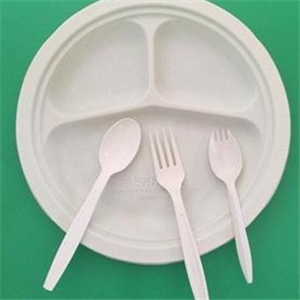

(2)生物降解塑料:又称生物分解塑料,在自然界如土壤、沙土及特定条件如堆肥化条件、厌氧消化条件、水性培养液中,被自然界中存在的微生物引起降解,更终完全降解变成二氧化碳(CO?)、水(H?O)和其他堆肥材料等天然物质。生物降解的过程主要由环境条件(例如温度或位置)、材料性质或应用等因素决定。此类塑料贮存运输方便,应用范围较广。
(2) Biodegradable plastic: also known as biodegradable plastic, it is degraded by microorganisms present in nature, such as soil, sandy soil, and specific conditions such as composting, anaerobic digestion, and water-based culture media, and ultimately completely degrades into natural substances such as carbon dioxide (CO?), water (H? O), and other composting materials. The process of biodegradation is mainly determined by environmental conditions (such as temperature or location), material properties, or application factors. This type of plastic is convenient for storage and transportation, and has a wide range of applications.
(3)水降解:指在塑料中添加吸水性物质,用完后弃于水中即能溶解掉的塑料制品。但是适用于水处理的可降解材料不多,且大多耐水性差、在水中强度不高,不能满足日常使用的需要。以及水降解塑料材料成本过高,导致相关产品较高,大规模使用推广具有一定的困难性。
(3) Water degradation: refers to the addition of absorbent substances to plastic, which can be dissolved in water after use. However, there are not many biodegradable materials suitable for water treatment, and most of them have poor water resistance and low strength in water, which cannot meet the needs of daily use. And the high cost of water degradable plastic materials leads to high prices of related products, making large-scale use and promotion difficult.
光—生物降解:其兼备光降解和生物降解的功能,在降解过程中,以光降解为基础,在太阳光的作用下,塑料制品中能够实现光降解的部分被降解,其余不能进行光降解的部分,则需要通过生物化学方式,使高分子链断裂转化成低分子量化合物,更终实现降解。光—生物降解同事弥补了光降解和生物降解的缺陷,既避免了光降解中光照不足的缺点,同时也克服了生物降解时间过长的弊端,降解速度是普通降解塑料的五倍以上。但是仍处于研发阶段,相应产品较少。
Photobiological degradation: It combines the functions of photodegradation and biodegradation. During the degradation process, based on photodegradation, under the action of sunlight, the parts that can achieve photodegradation in plastic products are first degraded, while the rest that cannot undergo photodegradation require biochemical methods to break the polymer chains and convert them into low molecular weight compounds, ultimately achieving degradation. Photobiological degradation has made up for the shortcomings of both photodegradation and biodegradation, avoiding the disadvantage of insufficient light during photodegradation and overcoming the disadvantage of long biodegradation time. The degradation rate is more than five times that of ordinary degradable plastics. However, it is still in the research and development stage, and there are relatively few corresponding products.
本文由可降解颗粒友情奉献.更多有关的知识请点击: https://www.qiluxinke.com真诚的态度.为您提供为的服务.更多有关的知识我们将会陆续向大家奉献.敬请期待
This article is dedicated by biodegradable particles. For more information, please click on: https://www.qiluxinke.com Sincere attitude. We will provide you with comprehensive services. We will gradually contribute more relevant knowledge to everyone. Stay tuned
- 上一个: 你用的餐具你感觉吗?
- 下一个: 玉米淀粉基餐具的使用优势
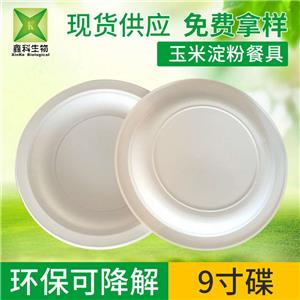 150碟子
150碟子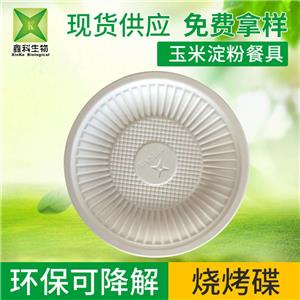 一次性环保餐具-...
一次性环保餐具-...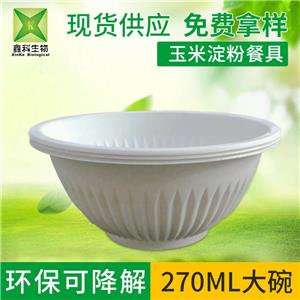 一次性可降解餐具...
一次性可降解餐具...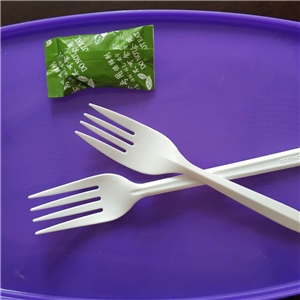 一次性餐具-叉子
一次性餐具-叉子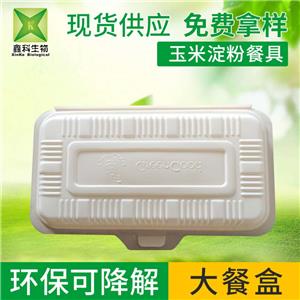 环保餐盒
环保餐盒
相关产品:





